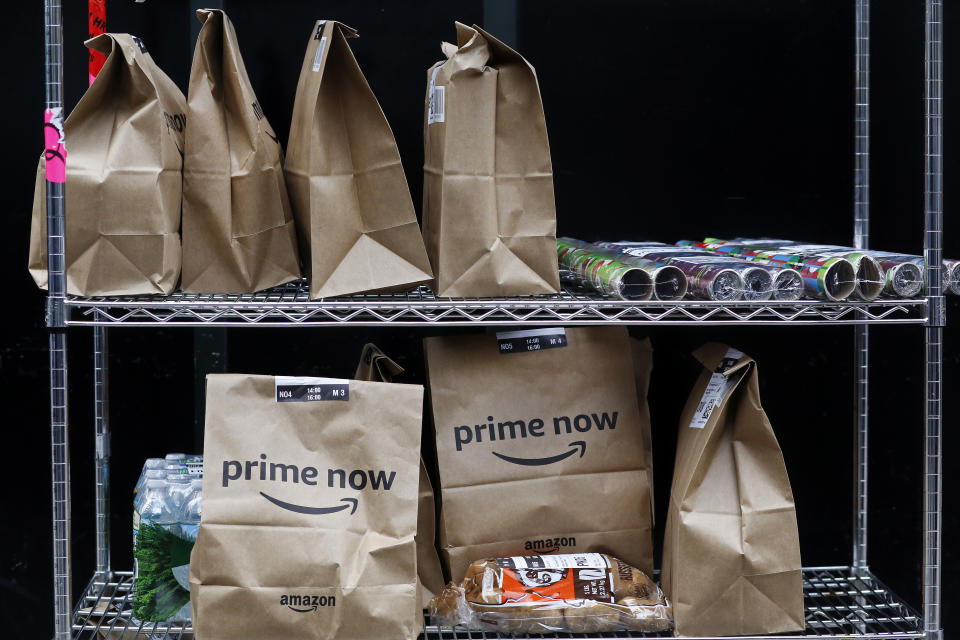The biggest reason smaller retailers can't catch Amazon

The biblical volume of business that Amazon and other major retailers generate allows them to thrive on razor thin margins and provide crazy low prices and (in some cases) faster delivery of items.
As a quick look on Google Shopping will tell you, the prices online from Amazon and Walmart aren’t always the cheapest, but the value of speedy shipping they offer consumers is often unbeatable. For an Amazon Prime item, in general, two-day shipping isn’t that impressive anymore as a whopping number of items offer certain regions one-day or same-day shipping for only a few more dollars.
Thanks to PayPal, Google Checkout, Square, and — ahem — Amazon, smaller retailers can offer users some of the same features and functions that make Prime so alluring. The pre-filled out address and credit card information enables one- or two-click shopping and partnerships with recognizable public tech companies get consumers to trust smaller websites that do not have any preceding reputation.
But these payment solutions can’t offer the entire Amazon Prime experience, mainly the unfathomably fast shipping at bargain prices. Two-day shipping, innovated by Amazon with its Prime program in 2005, coupled with fast checkout are now table-stakes for e-commerce.
Table stakes for e-commerce: instant gratification
This “Prime-ification” has led shipping costs to become so high that some companies have been forced to charge higher prices for items online versus in-store. At a conference in 2017 Walmart’s CFO Brett Biggs referred to his company’s “pickup discount” that rewards customers who do their own logistics by driving to the store to pick up their orders.
“We’re good with that,” Biggs said, “because the best way or the most efficient way for us to get a good delivered is to the store. If you want it delivered to your house, we’ll do that as well.”
For Walmart, the nation’s leading retailer with both robust online and in real life (IRL) platforms — they are the only store in town in some cases — Amazon has pinched them enough to offer their own Prime-like benefits, giving consumers a win as these two giants clash. Every major retailer has followed suit. Target’s COO, speaking on an earnings call last year, called two-day shipping “standard” and said it was “working hard to reduce costs throughout [for two-day] while improving the speed.” Everywhere, this is the objective.
The raging competition between Walmart, Target and Amazon provides consumers with a win — prices and delivery times drop, but the game may be deadly for smaller players which simply can’t keep up.
“Online it’s almost impossible to differentiate yourself. It’s impossible to be profitable, said Alexei Agratchev, the CEO of RetailNext told Yahoo Finance, which provides in-store analytics. “Amazon set these amazing expectations to be able to offer fast delivery, free returns.”
“In its first year, we gave up many millions of dollars in shipping revenue, and there was no simple math to show that it would be worth it,” Amazon says on its website. Today, the capital outlay to do a move like this still remains an extreme barrier. Only companies that have mammoth economies of scale can even think about this.
Down the road, the insanely high expenses of e-commerce due to the Prime-ification of retail could lead to interesting consequences. It’s possible that a further consolidation of customers to a few big retailers will continue, Agratchev told Yahoo Finance, adding that this e-commerce race could also actually lead back to reviving brick and mortar.
“It’s much easier to be profitable in brick and mortar than e-commerce,” he said. For example, “When customers try on three pairs [of shoes] and sends one back, it’s impossible to make money unless your margins are ridiculous.”
What a brick and mortar re-pivot would look like for retail is anything but clear, especially as Amazon takes further steps to streamline its logistics with vertical integration of its delivery options, allowing it to get even faster. But today, one thing is clear: Consumers expect their goods to be cheap and delivered fast. They will not accept anything less.
Ethan Wolff-Mann is a senior writer at Yahoo Finance focusing on consumer issues, tech, and personal finance. Follow him on Twitter @ewolffmann.
This story is a part of Yahoo Finance Presents: The Retail Revolution, March 5-9, 2018.
